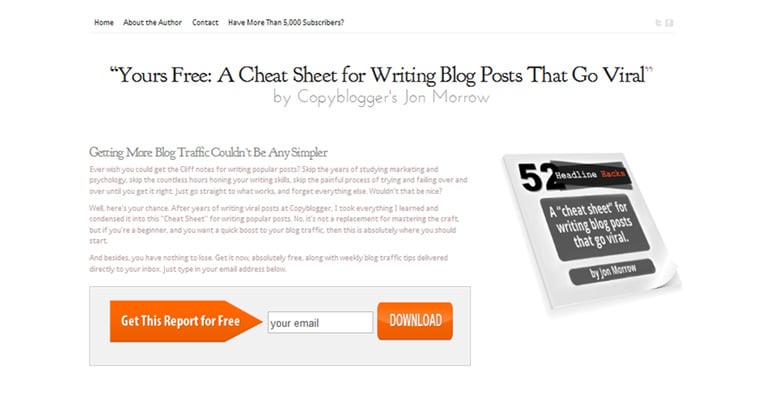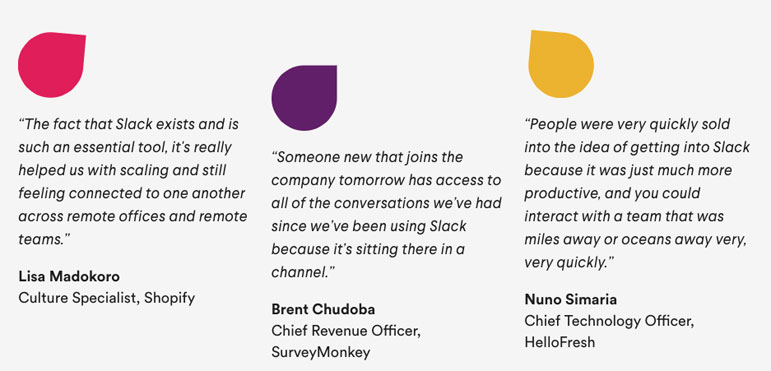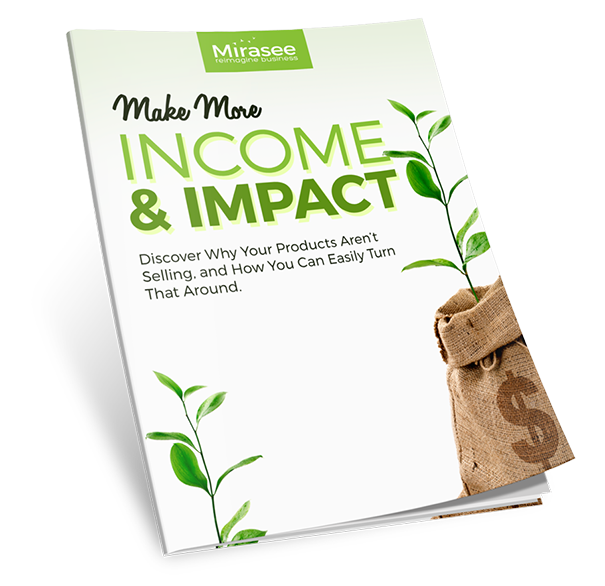Product Launch Ideas: How to Rock Your Next Launch
Jessica Glendinning
Imagine this:
You just finished up your first major product launch, and… It. Was. Amazing.
Your sales totals were higher than you could have hoped. You have tons of new, excited customers with your life-changing product in their hands. And you can see this being the first step of many on the way to building a super successful business.
How would that achievement feel?
Sure, you would probably be tired from all the hard work. But think past the effort, and try to feel how excited you would be after a successful product launch.
Pretty great, right?
So what’s standing in your way? If you haven’t launched a product (or online course) into the world yet, why not?
If we had to guess, it’s because product launches can be terrifying.
But product launches scare people because they are often over-complicated by the people who teach about them. If you really want to launch a product, let go of the idea that it needs to be complex.
Instead, let’s take a look at exactly how to launch a product — from what a good product launch looks like, to what it takes to pull it off.
And we’ll even throw in a section explaining the ins and outs of 21 proven product launch ideas.
Ready to rock your next launch? Let’s get started.
How to Launch a Product: Everything You Need to Know
Before we dive in, let’s clarify something. There’s a lot of terminology tossed around in the marketing world, often incorrectly. And one of the big misconceptions is the difference between a campaign and a launch.

“Campaign” and “launch” are often used interchangeably, but they’re not the same thing.
You can run a campaign for most anything, like getting more subscribers or getting more sales. A campaign is just a group of marketing materials that are meant to achieve a specific outcome, in a way that a singular thing couldn’t.
A launch, in contrast, is a marketing strategy designed to bring a product to market and make as many sales as possible in the process.
A launch is usually scheduled for a short set period of time, and the sequence of events is carefully planned out far in advance. And this is one of the reasons launches are taught as a complicated process. Because, to be honest, they can be.
Or, you can choose to craft a simple – yet effective – product launch.
One of the best ways to avoid overcomplicating things is to choose a different path from the standard cookie-cutter product launch. You don’t have to do things the same way everyone else is doing!
Our biggest piece of advice is this: focus on the people you serve, rather than the product. Make the launch all about your customers.
If your product is unique and improves your customers’ lives, they’ll be more willing to buy.
So remember: it’s not about your product. It’s about what your product can do for your customers.
Now let’s take a quick overview of the three main stages of a launch.
The 3 Stages of a Product Launch
It’s pretty simple — there are three main phases you will need to focus on while planning your launch: pre-launch, launch, and post-launch.
Pre-launch is the time period where you’ll do the most planning.
This is the time to figure out all of the moving pieces of your launch, schedule everything out, create any content for your launch, and generally get as prepared as humanly possible.
There’s a chance you may need to pivot mid-launch, but having a solid plan in place before you begin will help you minimize the stress of launching.
Launch is when the rubber meets the road. This is the day your cart opens and people can purchase your product. It’s likely a short period of time where you make a hard sales push and try to get as many people as possible to purchase.
Post-Launch is the time period after the cart closes. This is when you should be focused on providing great customer service to all of your new customers. It’s also when you take stock of how the launch went — what went well and what didn’t, how you can improve, and what lessons you learned.
Before you start your pre-launch planning, it’s good to set goals for your launch, so you know how to measure your outcomes.
Determine Your Launch Goals
What is your desired outcome for your launch? If you were to look back after the launch is over, what would make you feel like it was successful?
Launch goals will be different for different businesses, but here are a few examples of what your launch goals might look like:
- You generated X number of quality leads
- You sold your online course to X number of students
- Your product is in the hands of X happy customers
- You got X leads in X amount of time
- Your product got X votes on Product Hunt
- Your revenue increased by X percent
Once you’ve determined your launch goals, it’s time to figure out how to track them.
Like your goals, your method of tracking will depend on your industry and your specific business. Here are a few examples of what metrics you might track:
- You use Google Analytics, and compare your traffic numbers pre- and post-launch
- You log in to your email marketing software and count your new leads
- You compare the cost of your launch with the revenue (after the launch is complete)
- You put a reminder in your calendar to check on the number of votes on Product Hunt
Now that you’ve determined your goals (and know how to track your success), it’s time to make a plan for how you’ll achieve those goals.
Remember just a few paragraphs ago, when we recommended that you focus on your customer? You’ll start there.
Understand Who You’re Selling To
Before you start to plan your launch, the single most important thing you can do is understand your customer.

This is where you can begin to differentiate yourself from all the other launches out there — the ones only concerned with selling as many widgets as humanly possible.
Yes, you still want to make a ton of sales, but you’re focused on solving a problem for your customers. Find a way to make their problems go away, and the sales will follow.
This step boils down to two things. 1) Understand your customer, and 2) identify how you will reach them.
First, know who you want to serve.
The more deeply you understand your target audience – their fears, their desires, the problems that keep them up at night – the easier it is to craft your marketing in a way that makes them stand up and pay attention.
If you don’t have an audience yet, define your target audience and buyer persona first. Then you can seek out those people online and pay attention to their conversations and interactions. You might also decide to research their buying patterns, or monitor your competitors for clues about what motivates those types of people.
If you do have an audience, start with them first. You might choose to interview them one-on-one, or survey them (if you have an audience of at least 1,000 people), to gain insight into how they spend their time online, and what kind of needs or problems they are dealing with.
Either way, you want to understand the following things:
- What problem or pain point your product can solve
- What differentiates your solution from the competition
- What segment of your target audience is most likely to purchase
- Who your most engaged customers are
- Where your customers spend time online
- How your customers will discover you before (and during) your launch
Now you know what problem your product will solve, you can start to think about how to position your product as the solution your audience can’t live without.
One easy way to accomplish this is to let your customers join in the creation process with you. We call this co-creation, and it lets you avoid some of the most common pitfalls of product creation.
Whether you do this through a specific piloting process or just ask for their feedback on your ideas, allowing your audience to be part of product creation makes them feel more connected to the product.
Take the IKEA effect — this is a phenomenon in which buyers value a product more if they helped create it. On the other hand, they perceive something that someone else created as having lower value. And the more involved people are in creating the product, the more value they place on it.
Even if you decide not to co-create your product with your audience, be sure to detach from your ideas about what you think is best for your customers, and create the product your customers have asked for!
Let’s take a look at how you can clearly articulate the “who, what, and why” of your product launch.
Position Your Product as the Answer to Their Prayers
You’ve done a ton of customer research, and you have a really clear idea of how your product will benefit your audience. But that’s just the foundation.
Next up, decide how you’ll show your audience that you understand them. It will be helpful to understand a few copywriting and content principles, as well as how to position your product.
Your Product = The Perfect Solution
First, make sure you can answer the following questions:
- Who is your product for? (And who is it definitely NOT for?)
- What does it do? (Focus on the benefits, rather than the features.)
- What differentiates your product from the competition? (Is there something about your product, or the story of its creation, that sets you apart from the crowd?)
What is your unique selling proposition (USP)? What specific thing does your business stand for?
One way you can be clear about your USP is to communicate, early and often, how your product is in line with what your customer really wants.
Once you have a clear idea of the benefits of your product (as well as the features), it’s time to write your promotional copy.
Create Promotional Content
What do we mean by promotional content, you might ask?
All of it. Everything that supports your launch — from blog posts to landing pages, sales pages to email copy, social media posts to video content!

As you create promotional content for your product launch, think about how you can make it story-driven, and how you can make your customer the hero of the story.
“As you create promotional content for your product launch, think about how you can make it story-driven, and how you can make your customer the hero of the story.”
Tweet Me
We know the sheer volume of content is part of what’s overwhelming about planning a launch, so let’s break down each type of content and how it can support your launch.
For each type of content, remember why you created this product, who you created it for, and what problem it helps solve.
Remember, stay focused on benefits, not product features. And not every launch needs every kind of content.
Written Content
When you think about what writing you’ll do to support your launch, you can break it down into two goals: writing that helps you sell, and writing that educates your audience.
Goal 1: Writing for Sales
- Landing page copy
- Sales page copy
- Email pre-launch copy to get people excited
- Email launch copy to continue to engage, inspire, and talk about product benefits
- Written testimonials from current customers
Goal 2: Writing to Educate
- Blog posts and ebooks
- Guest posts
- Nurture emails
- Social media posts for each platform you actively use
All written content should be optimized for readability, click-through and open rates, and conversions — but if this is your first launch, just focus on the purpose of each piece of content.
What do you want the reader to learn from the content, and what action do you want them to take after they read it?
And at the end of the day, remember that done is better than perfect!
Visual Content
Create eye-catching visual content to help you stand out on social media.
It’s also important to have a consistent branding strategy across every type of content, so your audience can immediately identify that a particular piece of content “belongs” to your launch.
Here are the types of visual content you might choose to create for your launch:
- Behind-the-scenes photography
- Visual countdowns for social media
- Infographics about your product or your topic area
- Featured images for all blog posts
- A “hero” (header) image for your newsletters and/or emails
- Facebook cover photo and post graphics
- Instagram photos
- Twitter cover photo and post graphics
- Pinterest images
Video Content
Use video content to give people as much information about the product as possible. And share these videos far and wide — on your website, on social media, in your emails, and any other places where your audience hangs out online.
The types of video content you might create are:
- Product demos and explainer videos
- Behind-the-scenes video
- Live videos on social media
- Video testimonials from current customers
Think about any questions, reservations, or doubts you can overcome through a well-thought-out video.
The more people can feel like they know what your product is and does, the more comfortable they’ll feel when it comes time to pull out their wallets.
Interactive Content
Gone are the days where products were primarily sold through a newspaper or catalog. These days, people prefer to interact with brands and products, not just read about them. What kinds of interactive content can you create, to boost engagement among your audience members?
Here are two types of interactive content you might create:
- Quizzes as a way to capture leads
- Games and gamified content
Now that we’ve discussed what kind of pre-launch content you might use, let’s take a quick look at a real life example.
Student Spotlight: Pre-launch Content
When we spoke to a few of our successful course building students earlier this year, we asked a few questions about launching and marketing their online courses.
We specifically asked: “How did you launch your online course,” and “What marketing strategies did you use to enroll students?”
For his Pro Audio Workshop: Seeing Sound, Nathan Lively created a handful of Pre-launch Content, including:
- An ebook;
- 2 podcasts; and
- 2 blog articles.
This content allowed him to deliver value to his customers in advance of his launch.
We’ll also check in with a few of his fellow successful Course Builder’s Laboratory students later on in this post.
Next, let’s take a brief look at two different approaches to how to craft a launch: the funnel vs the flywheel.
Launch Formulas
When you think of a launch, there’s a high likelihood that Jeff Walker’s Product Launch Formula comes to mind (or one of the myriad launch products his formula inspired).
This formula involves something he calls the “Sideways Sales Letter technique” — where you take a traditional sales letter and split it into multiple pieces. You send out multiple emails, with a specific piece of pre-launch content associated with each, and then end with a sales pitch.
The pre-launch content is often an email that leads to a video, and a series of 3 pre-launch videos.
- The first video covers “why” the audience would benefit from the product,
- The second video speaks to the transformation or opportunity the product provides, and
- The third video covers the “how” (what it’s like to own the product and how it will change lives).
But as the online market has grown more sophisticated, the Jeff Walker style launch has grown less effective for businesses in many industries. (There are people who still swear this launch method works, but we don’t see as many success stories as we used to from this approach.)
There are a handful of reasons this approach doesn’t work as well anymore. Let’s take a look at each, and then talk about an alternative way to launch a product:
1. It’s hard to launch to “everyone.”
When you’re just getting started, you probably don’t have your list segmented cleanly. And if you’re trying to plan out a launch and adding a ton of new subscribers at the same time, you run the risk of trying to deliver everything to everyone.
It’s much easier, and better in the long run, to have a segmented marketing plan. This lets you focus on the exact needs of each subset of your audience, and results in much better user retention than the “serve everyone” approach of a standard launch.
2. Your audience only has so much attention to give
Similarly, attention is a finite resource. In today’s busy online world, users have a limited amount of attention for all the marketing messages headed their way — so it’s in your best interest to use that attention wisely.
Have you ever ended up on a launch list that just wouldn’t quit? Over the course of multiple messages per day in what felt like a never-ending firehose of “pay attention to this” and “buy this,” your patience was put to the test. Even if you were still subscribed at the end of the launch, the list owner still burned a lot of their goodwill in the process.
It’s important to think about how much you’re asking from your audience.
3. Fast word-of-mouth growth is hard to achieve
In an ideal world, every interaction with your audience would leave them surprised and delighted. But it’s hard to exceed expectations when a launch is moving so fast.
When there are large numbers of people joining your list all at once, it’s hard to control the audience coming in, and difficult to ensure an amazing experience for each of them.
And since word-of-mouth is one of the most powerful ways to grow an engaged audience, you will need to decide what launch pace works best for you and your business.
4. Launches are not a sustainable growth model
A traditional launch takes up a LOT of time and energy, in both planning and implementation. When you’re totally focused on your launch, there’s not much time left over to make sure you have a long-term strategy in place.
While a launch can be a great short-term cash infusion, there is a danger of burning out your audience if you launch the same product too often.
Before you decide which model of launch works for you, think about the long-term picture. How can one cohort of product users lead to the next? And what actions need to happen in between? You should also look at how your setup retains users over the long term.
How can you set up a sustainable system of growth? And how do product launches fit in?
One way to think longer-term is to use the concept of a flywheel, instead of the traditional funnel.
Jim Collins (the originator of the idea as it applies to marketing) calls the flywheel a “quiet, deliberate process of figuring out what needed to be done and then simply doing it.”
Rather than the fanfare and hoopla of a one-time big push to the finish, the flywheel takes one small step at a time, and each step slowly builds momentum over time.
Quality growth – where a company focuses on getting the right customers in the door and then moves those users along the path to advocacy – considers the user experience in its entirety.
The flywheel customer journey looks like this:
- Customers begin as Evaluators, who are just browsing to learn more,
- Then move to Beginners, who are figuring out how you can help them,
- Then transition to Regulars, who are using your product to achieve their goals,
- And finally become Champions, who are actively invested in your success.
Once you have the initial flywheel in place, your focus shifts to how you can help users complete each step more quickly. This eventually results in a positive feedback loop, where new users quickly grow to be advocates and bring in even more new customers.
Where a traditional sales funnel thinks about customers as an outcome of the sales process, the flywheel optimizes the user experience because it recognizes the customer as a key component to the system.
Since customer referrals and word-of-mouth are huge motivators for purchasing decisions, the flywheel makes total sense. Happy customers create momentum, which drives referrals, and leads to repeat sales.
You’ll hear us say it over and over in this post: put your customer first. How can you surprise and delight them? How can your product launch provide an amazing experience, so much that they can’t wait to tell their friends?
How can your launch create happy customers?
Now that you understand the three phases of a product launch and the types you might choose, know what your launch goals are, and know the “who, what, and why” of your launch, let’s look at some of the key lessons Mirasee has learned over the years, through many (many) launches.
Launch Tips & Tricks
We’ll begin with some of the big (but basic) lessons learned.

First, launches take a lot of time and effort. More than you imagine. And usually far more than you’ve planned for.
We say this not to scare you, but to advise you to start preparing well in advance. Smart business owners also leave some extra time and wiggle room, so you can pivot on the fly if something goes sideways during your launch.
Next, be sure to create (and test!) your product ahead of time.
Your product is the whole reason you’re doing this launch in the first place. So be sure to have the product finalized and repeatedly tested before you open the cart.
If it’s a physical or digital product, make sure to get it into the hands of beta testers with plenty of time to spare. If you’re launching an online course, run a pilot of the course before you try a full launch.
Along with the product itself, be sure to give yourself plenty of time to create your promotional content.
Truth is, you have less time than you think you do. Prioritize the “must have” content, get it done, and then come back to pick up the “nice to have” content.
Plan out how often you’ll reach out to your audience. You’ll want to reach out as much as possible — but make sure you have a good reason for each touchpoint. You might share news, updates, case studies, FAQs, special offers… just keep in mind how much attention you’re asking for, vs what you’re giving in value.
The Mirasee Operations team has learned to track everything over the years. A short-list of their favorite things to track follows:
- Opt-in page conversions
- Other landing page conversions
- What questions buyers are asking
- How effective your webinar is (if you’re holding one)
- Sales numbers
- Split testing
- And the list could go on…
And our final tip of the day is that timing is everything. Pay attention to major holidays (in any countries your target audience lives in), times of year, etc.
One time, Mirasee planned a launch during American Thanksgiving, because we’re a Canadian-based company and we forgot to check the United States holiday calendar. (Oops!)
Simply put: you want to release your product when your ideal customer is ready and willing to spend money.
Speaking of timing, let’s move on to how to schedule the big pieces of your launch.
How to Schedule Your Launch Content
There are 3 big steps to consider when you’re scheduling the promotional content for a traditional-style launch. Let’s walk briefly through each, including the most important things to consider.
Step 1: Choose Cart Open and Cart Close Dates
For this first step, pick two dates:
- When the cart will open (when you want to start making sales), and
- When the cart will close (the last date people can buy your product).
The time in between those two dates is your launch window.
Step 2: Pick Your Pre-launch Window
Choose a third date that’s a reasonable amount of time before the Cart Open date. This will be your Pre-launch window, where you’re getting your audience excited about your soon-to-be-released product.
You will want to prepare all of your written pre-launch and launch content before this window of time. That includes landing and sales page copy, email copy, blog posts, guest posts, and social media posts.
Be sure to also create all of your visual and video content before pre-launch starts. This includes behind-the-scenes video and photos, infographics, blog and social media images, and product demos or explainer videos.
Step 3: Populate Your Content
For any content that can be scheduled ahead of time, do that now.
This could be putting blog posts into WordPress and scheduling them for the appropriate dates, scheduling social media posts, or scheduling emails to send on a particular schedule.
Remember, your goal for Pre-launch is to get people excited for when the cart opens, and your goal for the Launch window is to get people to buy.
You can plan every single piece of a launch out in advance. But what happens when things don’t go as planned?
How to Pivot When Things Go Sideways
Danny loves the Dwight D. Eisenhower quote, “plans are useless but planning is indispensable.”
Your launch is likely to have a few bumps in the road, and things will come up that you didn’t anticipate. But a good entrepreneur is prepared to pivot when necessary. Here’s some Mirasee advice for when something’s gotta give.
Pivoting during a launch is incredibly difficult to do. Even if you’re very well attuned to what your audience wants and you’re a good writer, it’s still incredibly time consuming.
In essence though, pivoting isn’t complicated. Listen to your audience’s questions, find out what they are and aren’t understanding, and then analyze what’s missing in your copy.
Listen to your customers.
As the product creator, what you think matters. You have a lot of choices to make about what to present when, and how – and it’s your job to make those decisions.
But you don’t get the final word. Only your students and customers do.
Be quick to own a problem, and quick to solve it. And if you run into problems with bad publicity, don’t ignore it — it won’t just go away. This is your chance to respond with grace.
Put yourself in your customers’ shoes. Apologize, be honest and genuine, and always offer a solution.
So there you have it. Now you have a good idea of what a brilliant launch looks like, and the overall steps to take so you’re fully prepared for what might come your way.
Next, let’s break down 21 different ideas you might choose to incorporate into your product launch and some well-executed examples.
The Ultimate List of Proven Product Launch Ideas
Now you know what the structure of a launch could look like, but do you know exactly how you’ll plan yours?

Let’s take a look at different product launch ideas so you can choose which is best for you.
We’ll start at the beginning…
1. Pilot Your Product
As mentioned earlier in this post, co-creation is one of the most powerful ways to validate a product idea.
Nowhere is that power more evident than when you pilot an online course idea. By working directly with your students, you get a chance to not only learn about the problems they want to solve, but you also get to make sure your course works for them.
Rather than taking a “build it and they will come” approach, piloting lets you validate your course idea before you put a lot of time and effort into building out a full course.
Let’s check back in with a couple of our course building students, to learn about their experience with piloting.
Student Spotlight: Piloting
When we spoke to a few of our successful Course Builder’s Laboratory students earlier this year, we got them to go into detail about how they piloted their online courses.
First up is Andrea Harrison, who has piloted multiple different courses over her years as a CBL student.
“I used the piloting process when I launched my Gratitude Project.
During the first two months, I directly asked people for help and for feedback. For promotion, I blogged about [the course], emailed my very small email list, and posted it in appropriate groups on Facebook.
And, six times a year I run a 10-day “Joy Day Care” in a 7000+ person group. I do not directly discuss the Gratitude Project during that time, but students do sometimes.
I believe that has created a strong association between me and gratitude practice, which makes people more likely to purchase the program.
It’s an evergreen course but I promote it three or four times a year — often around a holiday or other potentially difficult time for people.”
And we also spoke to Staci Sprout, another CBL student who has run multiple pilots on her way to producing her first full online course.
“It has been SO fun to get paid for content I planned to develop anyway, receiving content-refining feedback as I go!
After my first pilot ended and I reviewed the feedback, it was very positive. However, I realized there were three more classes that needed to be developed, and that ultimately I would host a comprehensive online program made up of four core classes.
The materials evolved creatively and I kept listening to my intuition on what needed to come through. I really had to let go of my timeline and go with what showed up. I feel SO happy with the content, and even though it has been a lot of work, it’s been worth it.
Getting real time positive feedback has increased my confidence immensely.
I am well networked in my specialty field, so I was able to use industry listservs, social media, and my own email list of about 500 people to successfully announce my classes.
I used a Mailchimp landing page/sign up form for my first pilot, and then went through an existing training program to offer my second, so they did the marketing for me. (I was paid for the class and kept all intellectual property rights, which was fun.)
For the third class I used Eventbrite for sign ups. And for the fourth, I decided to simplify and create a page on my website to do direct email registrations.
Looking back I’m glad I tried different onramps — but I think simple is best (as I was coached from the beginning). I tend to complicate things by nature because I’m curious and want to try everything!
Next, let’s look at how you can bring your current customers into play, if you already have an audience and customer base.
2. Tap Into Your Customer Base
There are a handful of ways you can engage with your current customers to create a great launch experience.

First, identify your most engaged customers. These are the people who not only purchased something from you in the past, but who also:
- Left feedback for you (especially in-depth helpful reviews)
- Engaged with you on social media
- Sent you emails about their experience
These people usually represent somewhere around one quarter of your revenue share. Plus, you have between a 60- to 70-percent chance of selling to a current customer.
On the flip side, it’s often six to seven times more expensive to acquire a new customer, and the sales rates are closer to 5- to 20-percent chance of them buying your product.
Next, ramp up your interaction with these people. Be sure to engage with them, ask them questions, and interact with them during the ideation and prototyping phases. And be sure to ask if they want to stay in the loop about your new ideas (chances are, the answer is yes).
You might even surprise and delight them by sending them a beta version of your product for free.
Build social proof with their help, by asking them to leave an honest product review. This social proof will be critical during your launch. It’s more likely that new customers will want to purchase after reading positive reviews.
Plus, you get the added benefit of not needing to hire a copywriter — just use the positive language your current customers share with you about their experience with the product.
Now let’s move on to our third product launch idea:
3. Build a Pre-Launch List, or Take Pre-Orders
There are two slightly different approaches you can take.
- If you don’t have an audience yet, use this opportunity to build out a pre-launch list. Get emails for people who might be interested in your product.
- If you do have an audience, start taking pre-orders for your product.
The benefits of pre-selling are huge. First, you can start generating sales before the launch officially begins, which gives you operating budget to help with the launch.
Pre-selling can also grant a sense of exclusivity. The customers who buy early get a chance to get their hands on your product before anyone else. Even if you don’t ship your product until later, there’s still a sense that they got the scoop on everyone else who waited.
When you begin sales ahead of your launch, you can also plant the seed that your product might sell out before the launch is over, which creates a sense of urgency. Use this tactic carefully (and honestly) — if there’s no chance it will sell out, don’t lie and pretend it might just to create false scarcity.
Now let’s take a look at an example of the power of pre-launch list building.
Jon Morrow is the king of building pre-launch lists. Before he launched his site BoostBlogTraffic.com (now SmartBlogger), his homepage was a simple opt-in page.

When he put up the page, he had no subscribers. Zero. Zilch. And when he launched the site two months later, he had built up his list to 13,000 subscribers.
It took time and hard work, but he was able to launch to an engaged audience, even though he started completely from scratch.
And if you’re taking pre-orders, maybe you decide to…
4. Offer a Discount or Trial Offer
Rather than trying to create false scarcity, which can blow up in your face, you can also tap into the psychological human desire to save money.
One way to create positive scarcity is to offer a discount to people who pre-order before the launch. The discount could be time-bound, or limited to the first X number of people who purchase.
Generally speaking, people love to believe they’re getting a deal. Whether it’s buy-one-get-one sales, coupons, member discounts, or just a good old-fashioned sale, the idea of saving money is powerful.
While your product is still fresh in their minds, you might choose to give your prospective customers the chance to save.
As an example of the potency of getting a great deal, Harry’s offers a Starter Set for new customers, so they can try out the products before committing to something more expensive.
Moving on to our next idea, piloting and pre-orders allow you to…
5. Create Epic Social Proof
When you give a subset of your customers early access to your product, you have a chance to get feedback from them.
This might come in the form of an online review, a written testimonial, or a video talking about how your product changed your customer’s life.
Whatever kind of feedback you can get, be sure to collect as much of it as possible before you launch. This social proof is invaluable for building trust with new potential customers.
For example, Slack is a company that is totally focused on delighting customers, and has an entire page on their website dedicated to social proof directly from their customers.

It’s not just gathering social proof that’s important ahead of time.
6. Create Massive Pre-launch Buzz
How can you build suspense for your launch, so that people absolutely cannot wait to buy your product?
It all begins with anticipation.
You might share behind-the-scenes photos and videos of your product. You could reveal how the product was made, or document your product creation (and maybe even your marketing). Some of these teasers could include:
- Behind the scenes photos of your team during meetings
- Quick videos of the product during creation
- Stories on your blog about the origin story of the product
- A countdown to cart open
Do what you can to turn the announcement of your product into a “big deal.” Apple’s keynote presentations are a great example of how the company turns new product releases into suspenseful events.
And since this “build buzz” product launch idea is so important, let’s take a look at a second example.
This likely goes above and beyond the level of effort you should put into your product launch, but the genius promotional minds at Netflix created Stranger Things: The Game as part of their pre-season buzz.
But without an Apple- or Netflix-sized budget, how can you create your own buzz?
One way to do the above is to…
7. Create a Street Team
This approach is something that’s long been used by musicians and artists, when they get ready to release a new album or work.

But there’s a lot that entrepreneurs and small business owners can learn from the approach. A musician’s street team is made up of especially loyal and excited fans who will go the extra mile to promote their favorite band for free.
Members of the street team can be seen postering their town, sharing new songs on social media, or selling merchandise at the back of the room.
You can use this idea in your business by reaching out to those who really believe in you, your brand, or your product and asking for their help.
Think back to the super-engaged customers you identified earlier. Since they already believe in you, they will be the most excited to get the word out about what you’re doing.
One way to make it easy for your super fans to share the love is to create promotional copy they can borrow (sometimes called “swipe copy”).
You might also consider providing one-of-a-kind swag for your supporters. This could include things like:
- Customized thank you cards
- Videos you make just for the street team
- Referral bonuses
- Thank you gifts
- More access to you
Whatever form you choose, just make sure they know how much you appreciate them. The power of community can’t be discounted!
One example of a company that uses a street team comes from the writing world. Sean, Johnny, and David of Sterling and Stone used to have a low-key approach, but have since switched up the way they curate the people who receive advance reader copies of their books.
Another way to create buzz ahead of time is to…
8. Get Social (Media)
There are a few considerations as you decide what your social media strategy will be for your launch.
- Where do your customers hang out? If your average customer is a woman in her late 40s, you don’t want to waste your time on Snapchat. Similarly, if you serve millennials, be sure to meet them where they already spend time online.
- How much time do you have to engage? If you only have a few hours per week, don’t plan out a social media campaign for a whole bunch of different platforms. Only commit to a plan you can properly execute.
- Do you want to engage as yourself, or your product? If you want to keep your personal or company profile separate from this product launch, you might consider creating a separate account for the product itself.
Whatever your decision about the questions above, be sure to engage regularly on the platforms you choose to use for the launch. Don’t just promote — share value, start conversations, ask questions, and make the interactions worth the time for your potential customers.

You might also choose to go live on Facebook or Instagram, or create stories for each platform. Give your audience a chance to get to know you and your product, so they can take the first two steps in the know-like-trust journey.
As an example of companies that utilize live video and social media well, Tesla and SpaceX often partner up to create live-stream event hype. They get viewers excited about their products by showing off their products in spectacular style.
Another – specialized – version of social media lets you…
9. Take Advantage of Online Platforms and Forums
With the advent of crowdfunding platforms like Kickstarter and IndieGoGo, anyone with a great product and storytelling skills to match could fund their products and projects with the help of loyal fans.

Another option to get audience eyeballs on your new product is to get it featured on a platform like Product Hunt. It’s a “place for product-loving enthusiasts to share and geek out about the latest mobile apps, websites, hardware projects, and tech creations.”
Users submit and vote on their favorite tech products, and being featured can have huge benefits for your product launch.
You can also get your products in front of potential customers on forums like Reddit, Hacker News, Quora, or Mix. Be aware that each of these platforms has their own rules and regulations about promotion.
Matthew Inman (creator of The Oatmeal), is a phenomenal example of how a crowdfunding campaign can blow your launch goals out of the water. He has been part of creating several Kickstarter-funded games including Exploding Kittens (219,382 backers pledged $8,782,571), Bears vs Babies (85,581 backers pledged $3,215,679), and Throw Throw Burrito (53,643 backers pledged $2,559,458).
Or maybe you’re feeling philanthropic, in which case you could…
10. Give Back to The Community
Not too long ago, charitable giving was reserved for nonprofits and their major donors.
But fast forward to today, and there have been an increasing number of companies getting into the giving game. With the rise of Certified B Corporations and companies that believe that business can be a force for good, so has public awareness.
Whether it’s giving a percentage of your launch profits to a cause you personally believe in, or one that makes your industry a better place to do business, your audience may be more likely to purchase a product from a company that cares.
For example: Toms Shoes started with giving one pair of shoes to a person in need with every purchase, and has now expanded their giving to include impact grants, sight restoration programs, and safe water systems.
Another really great way to create excitement is…
11. Run Contests or Giveaways
What’s as great as getting your audience to create social proof? Getting their friends and social connections to generate buzz about your new product, too.

Choosing to run a contest on social media can help to amplify the people who already know (and are excited about) your product.
For example, each person who enters your contest creates a piece of content, like a photo. They share that photo as part of their entry, using your brand hashtags — and they follow your social account. Now, their followers see your promotion as well as your current audience. And with each new entry to your contest, you get new a new follower and a boost to your exposure.
You could use a tool like KingSumo or Viral Loops to help you run your viral giveaway. Or you can DIY the contest, and pick a random winner on your own.
Moving on to our next product launch idea, it may feel old-fashioned, but it’s still a good idea to…
12. Write a Great Press Release
Even if you never share it with the press, a well-written press release can help you understand how you want to tell the story of your product.
Start with the What, Where, When, and How of your product.
- What is the product, and how does it benefit your audience?
- Where can they find out more and purchase the product?
- When is the product available, and for how long?
- How did this product come to life? What’s the origin story?
Then, you can explain more about the product. Describe the features and benefits, and any information that would be helpful for your audience to know, or details that would grab their attention.
And end with a company description and contact information if people have more questions.
You might decide to add the press release to your website or blog, and then link to it on your social media platforms of choice.
For example, Hubspot writes a mock press release before they launch a new product, to make sure their messaging is aligned before they start promoting it.
Then, you can take that press release and…
13. Partner With the Press
Make a list of the media outlets who are most likely to be interested in your product — a good way to make this list is to figure out what audiences you want to reach, and then make a list of media those people consume on a regular basis.
Not everyone has access to a major television network or newspaper, but most people know at least a handful of smaller outlets that might be interested in promoting an interesting story.
Remember how you focused on the story of your product when you wrote your press release? Expand on that story, and figure out what’s most unique about your product. Then, you might offer an exclusive story to the media outlet that’s most aligned with your audience and goals.
Make a list of the outlets that are relevant to your niche (paying special attention to those who are primarily online platforms), and think about what parts of your story they would be most interested in. Then, you can:
- Go through the list and decide who you want to work with,
- Make note of who is already talking about your topic or industry, and
- Reach out via email to introduce yourself and your product.
As part of this outreach, personalize your emails. Be specific, and show the person you’re writing to that you took the time to learn about them.
Next, you can tap into other audiences that are interested in your topic area…
14. Write Guest Posts for Bigger Blogs
At one point in the early days of online marketing, guest blogging was the be-all-end-all of marketing tactics. But what about now?

Turns out, guest blogging can still be a beneficial boost to your product launch, especially if you do your research ahead of time. By finding blogs (with engaged readers) who are writing about a topic that’s related to yours, you can expand your pre-launch list.
For example, you might think that someone who writes about personal finance wouldn’t have any crossover with a parenting blog. But if you were launching an online course about budgeting basics for families, writing a guest post about how new parents can plan a budget to make sure they can pay for college could be just the ticket to get people signed up to your list.
Whether you guest post on someone else’s blog, or decide to post on Medium or LinkedIn to expand your audience, be sure to include a link in your bio that leads back to a landing page for your launch list.
For example, when Mirasee initially launched our (now closed) Course Builder’s Laboratory (CBL), Danny wrote a series of guest posts for 7 different influential blogs. These posts went up during the pre-launch and launch phases, and got CBL in front of a much larger audience than we originally had access to.
You don’t necessarily have to guest blog to capture someone else’s audience. You can also…
15. Interview Guests on Your Blog or Podcast
How often do you see an author or product creator talking about their recent feature on someone else’s blog or podcast? Our bet is: all the time.
When you take the time to interview someone, they’ll usually share that interview with their audience as well. And if you can bring in interview guests who are experts in related industries or topic areas, you’ll capture the attention of both audiences.
You might even consider bringing a couple of your most engaged customers on to talk about their experience with your product. Do you have any customers with compelling stories or tales of overcoming great odds to reach their goals, thanks to your product?
And as you’re thinking of potential partnerships, do you know of any influencers you’d like to partner with?
16. Utilize the Power of Influencer Marketing
Similar to the research you did to decide if there are blogs and podcasts you wanted to create guest content for, are there influencers in your industry that your target audience follows?

Influencer marketing can involve endorsements or product placements, and the cost will depend on how prominent the internet celebrity is.
Here are a few ways you might get influencers involved in your launch:
- Ask them to review your product,
- Ask if they will promote your contest or giveaway, or
- Ask them to attend your launch event.
If you already have a relationship with an influencer (or multiple influencers), you might choose to reach out to them and offer early access to your product in exchange for a review, a share, or a testimonial.
But if you don’t know any of the influencers in your space, you could consider paying one or two for their promotion of your product. Ideally, look for influencers who have both reach and audience engagement.
For example, Unsplash gives special credit to a list of 11 “patrons” who went above and beyond in their efforts to make sure The Unsplash Book became a reality.
You might also consider if you want to…
17. Run a JV Partner Launch
Many product creators decide to co-launch with an influencer or a friend.
This approach is more complicated, but can provide a wider range of social proof, and a bigger overall audience.
If you decide to go this direction, remember that audience overlap is just as important as audience size. Even partners with a small audience can be fantastic partners.
Here are some of the biggest lessons we have learned over the years about launching with JV partners:
- You need good technology to track everything. This includes how much and when each partner plans to promote, how many referral partners each sent your way, and how many sales each partner makes.
- Try to set your systems up so that the numbers take care of themselves. This allows you to focus on the people and relationships at the heart of the collaboration.
- Managing JV launch partners is a lot like great customer service. You’ll do a lot of explaining details, answering questions, and keeping your partners happy.
- Don’t value people for how much they sell. Value them for their willingness to partner with you, for their belief in you, and for the long-term ways you can partner and create together.
As mentioned, we’ve done a lot of product launches in our history. And many of those launches have included partners. In fact, there was a CBL launch where we had over 100 partners!
Please note: this was not a number of partners we ever repeated — instead, moving forward we chose quality partnerships over quantity. 😉
Moving on to our next product launch idea, maybe you want to create…
18. Product Launch Events
Your product launch event could be something as simple as an online gathering where there’s a combination of learning, some interactive events and games, giveaways, and time for your audience to get to know you.

Or, it might be as complex as an in-person event like MozCon, Dreamforce, or the Apple Worldwide Developers Conference.
Whatever level of complexity you choose, remember to keep your product launch event focused around your audience and how your product benefits them.
When you really know your target market, you can personalize the attendee experience so they feel like the event was created just for them. Because, really, it was!
You might choose to provide a hands-on experience with your product, use technology in a fun way, give your audience members the chance to network, tap into your local community, or feature a live performance.
Before we move on, let’s look at another real-life example of how to use a product launch event.
Student Spotlight: Product Launch Events
When we spoke to a few of our successful Course Builder’s Laboratory students earlier this year, we also got the low-down on how they approached product launch events.
Jennifer Jackson held 3 in-person workshops as part of the launch of her course, The Missing PEACE to Weight Loss.
“The workshops taught the first technique in the tool kit I teach as part of my course.
To promote the workshops, I sent out emails, created a couple of simple videos, and posted on social media. I reached out to businesses I already had a personal connection with who serve a similar clientele.
I created flyers, emails, and videos for them to send out to their lists to get their clients to come to my workshop. I made announcements wherever I went – yoga classes, spiritual events, etc. – and took down emails and followed up.”
You can take advantage of all the buzz you’ve created and…
19. Highlight the Product on Your Website
Your product is something you’re proud of. Right? So treat it like it is!
Make sure the product is front and center on your website leading up to and during your launch. You might also decide to include it in the “new arrivals” section of every relevant category, if you have other pages of your site dedicated to your products.
It boils down to this: when a prospective customer visits your website, they shouldn’t have to dig around to find your product. Make it the star of the show, at least during your launch.
Target utilizes a number of the product launch ideas in this post. Since 2011, they have collaborated with designers to create limited edition collections. They feature these items on their website (which usually sell out quickly), and create huge buzz ahead of time by hinting at what items they might bring back from their favorite designers.
You can also highlight your product on your blog…
20. Write on Your Blog
As you’re creating your pre-launch content, don’t forget about blog posts.
Start talking about your product on your blog before the product is released, and keep talking about it after your launch is complete. Since your blog is a great source of new leads, use it to your advantage.
Did you know that over 80 percent of customers trust the advice they get from blogs?
You can use your blog to highlight the product journey, from idea to launch. Just remember to link to the pre-launch landing page (or the sales page) for each post.
For example, the team at Mint published a huge amount of high-quality content (hundreds of articles and infographics) as they were attempting to break into the personal finance niche.
After you’ve written all those great blog posts, you might also…
21. Run a Webinar
If you’ve never tried to run a webinar before, keep it simple!

Don’t go overboard, trying to create a massive sales-producing webinar on your first try. People can smell a hard sell from a mile away, so it’s better to use your webinar as an additional teaching tool on the way to your product launch.
You could run a short teaching-focused webinar or live tutorial to help your audience understand how to use your product, or share some “secret” behind-the-scenes tips and tricks for how to get the most out of the product.
Most importantly, do what’s best for your audience… and try to have fun with it!
Now it’s time to decide. How will you structure your launch, and which of these ideas will work best for you?
Choose the Right Product Launch Ideas for You
You’ve come a long way. You’ve learned about the stages of a launch, determined your launch goals, and come to an understanding about who exactly your product is for.
You’ve perfectly positioned your product, created your promotional content, and learned some launch tips and tricks.
But now it’s time for the real work. It’s time to decide exactly what structure your launch will take! Take a deep breath, hold on to the excitement of bringing your amazing product into the hands of your waiting audience…
And get to work.
And if you’re still feeling a little “iffy” about how to sell more of your product during your launch, you can pick up your free copy of our Make More Income and Impact special report.

Make More Income & Impact
Discover Why Your Products Aren't Selling, and How You Can Easily Turn That Around.
Amar Kumar
Hello Jessica,
Today, in huge competitive era – throwing facts at your target audience about your new product isn’t enough to make people buy and spark up emotion.
It’s important to take a step back and think about the big picture here. No matter what you’re launching, your end goal is to create highly retained users.
That means you should be trying to build awareness, get feedback, and connect with people who will help you move forward and iterate after launch day.
You have introduced powerful facts regarding subject and going to very helpful for people.
Eventually, thanks for sharing your experience with us.
With best wishes,
Amar Kumar
Jessica Glendinning
Thanks for the great feedback, Amar!